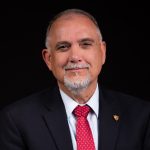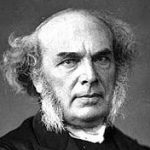The Point: Church membership is a privilege made possible through Christ.
Members of the Household of God: Ephesians 2:17-22.
[17] And he came and preached peace to you who were far off and peace to those who were near. [18] For through him we both have access in one Spirit to the Father. [19] So then you are no longer strangers and aliens, but you are fellow citizens with the saints and members of the household of God, [20] built on the foundation of the apostles and prophets, Christ Jesus himself being the cornerstone, [21] in whom the whole structure, being joined together, grows into a holy temple in the Lord. [22] In him you also are being built together into a dwelling place for God by the Spirit. [ESV]
[17-18] “Already we have been told that Christ is our peace [14] and that he created a new humanity by making peace [15]. But now he came and preached peace [17], publishing abroad the good news of the peace He had made through the cross. First He achieved it; then He announced it. And since the achievement was at the cross, and logically the announcement must follow the achievement, this preaching cannot refer to His public ministry. It must refer rather to his post-resurrection appearances, in which the very first word He spoke to the apostles was Peace be with you [John 20:19-21], and to His proclamation of the gospel of peace to the world through the apostles and through subsequent generations of Christians. Jesus Christ is still preaching peace in the world today, through the lips of His followers. For it is truly a wonderful fact that whenever we proclaim peace, it is Christ who proclaims it through us. Moreover this good news was addressed from the start to the far and near, that is, to Gentiles and Jews equally: he came and preached peace to you who were far off and peace to those who were near [17]. And many of each community embraced it, and thereby found themselves united to God and to each other. For through him we both have access in one Spirit to the Father [18]. Although reconciliation is an event; access is the continuing relationship to which it leads. Access conjures up the scene in an oriental court, when subjects are granted an audience with the king or emperor, and are presented to him. The flavor of the word remains, but the emphasis changes because our access is not to a king but to a Father, before whom we have boldness and access with confidence [3:12]. And in the enjoyment of this ready access to God, we find we have no practical difficulty with the mystery of the eternal Trinity. For our access is to the Father through the Son who made peace and preached it, and in or by one Spirit, the Spirit who regenerates, seals and indwells His people, who witnesses with our spirits that we are God’s children, who helps us in our weaknesses and teaches us to pray, and who unites us as we pray. For it is we both, Jews and Gentiles, who as members of God’s new society now approach our Father together [18]. Thus the highest and fullest achievement of the peacemaking Christ is this Trinitarian access of the people of God, as through Him and by one Spirit we come boldly to our Father.” [Stott, pp. 103-104].
[19-22] “So then, Paul begins his summing up. He has explained step by step what Christ has done to bring near to God and to His people those in the Gentile world who were previously far off [13]. Christ has abolished the law of commandments, created a single new humanity in place of the two, reconciled both to God, and preached peace to those near and far. So then, what is the result of Christ’s achievement and announcement of peace? It is this: you are no longer strangers and aliens. The Gentiles are no longer like visitors without legal rights. On the contrary, their status has dramatically changed. Now they belong in a way they never did before. They used to be refugees; at least now they have a home. In order to indicate the richness of their changed position and their new privileges in Christ, Paul resorts to three familiar models of the church, which are developed in many other passages of Scripture. He pictures the new Jew-Gentile community as God’s kingdom, God’s family and God’s temple.
God’s kingdom [19a]. According to verse 12 the Gentiles used to be stateless and disenfranchised outsiders, alienated from the commonwealth of Israel. But now, he says to them, you are fellow citizens with the saints, which seems here to mean the Jewish people, the saints or holy nation. Although he does not develop the metaphor, Paul appears to be alluding here to the citizenship of God’s kingdom. The kingdom of God is neither a territorial jurisdiction nor even a spiritual structure. God’s kingdom is God Himself ruling His people, and bestowing upon them all the privileges and responsibilities which His rule implies. To this new international God-ruled community, which had replaced the Old Testament national theocracy, Gentiles and Jews belonged on equal terms. Paul is writing while the Roman Empire is at the zenith of its splendor; no signs had yet appeared of its coming decline, let alone of its fall. Yet he sees this other kingdom, neither Jewish nor Roman but international and interracial, as something more splendid and more enduring than any earthly empire. And he rejoices in its citizenship more even than in his Roman citizenship. Its citizens are free and secure. The words no longer strangers and aliens, but you are fellow citizens emphasize the contrast between the rootlessness of a life outside Christ and the stability of being a part of God’s new society.
God’s family [19b]. The metaphor changes and becomes more intimate: you are … members of the household of God. A kingdom is one thing; a household or family is another. And in Christ Jews and Gentiles find themselves more than fellow citizens under His rule; they are together children in His family. Paul has just written in the previous verse of the new and privileged access to the Father which Jews and Gentiles enjoy through Christ [18], and earlier in the letter he has enlarged on the blessings of adoption into His family [1:5]. Soon he will have more to say about God’s archetypal fatherhood [3:14-15] and about the one God and Father of us all [4:6]. But here his emphasis seems to be less on God’s fatherhood than on the brotherhood into which, across racial barriers, the Father’s children are brought. Brethren (meaning brothers and sisters) is the commonest word for Christians in the New Testament. It expresses a close relationship of affection, care and support. Brotherly love should always be a special characteristic of God’s new society.
God’s temple [20-22]. Paul comes now to his third picture. Essentially the church is a community of people. Nevertheless, it may be likened in a number of respects to a building, and especially to the temple. The temple in Jerusalem had for nearly a thousand years been the focal point of Israel’s identity as the people of God. Now there was a new people; would there be a new temple, as Jesus had hinted? The new people was not a new nation but a new humanity, international and worldwide. A geographically localized center would therefore not be appropriate for it. What then could be its temple, its focus of unity? Here in verses 20-22 Paul elaborates his vision of the new temple in greater detail than elsewhere; it will repay careful study. As he develops his image, he refers to the foundation and cornerstone of the building, the structure as a whole and its individual stones, its cohesion and growth, its present function and (at least implicitly) its future destiny. First, the foundation. Nothing is more important to any edifice than a solid, stable foundation. For Paul the church is built on the foundation of the apostles and prophets. Since apostles and prophets were both groups with a teaching role, it seems clear that what constitutes the church’s foundation is neither their person nor their office but their instruction. Moreover, we are to think of them as inspired teachers, organs of divine revelation, bearers of divine authority. What the apostles taught they expected the church to believe and preserve, what they commanded they expected the church to obey. The word prophets also indicates inspired teachers to whom the word of God came and who conveyed that word to others faithfully. The inverted order of the words (not ‘prophets and apostles’ but ‘apostles and prophets’) suggests that probably New Testament prophets are meant. If so, their bracketing with the apostles as the church’s foundation is significant. The reference must again be to a small group of inspired teachers, associated with the apostles, who together bore witness to Christ and whose teaching was derived from revelation [3:5] and was foundational. In practical terms this means that the church is built on the New Testament Scriptures. They are the church’s foundation documents. And just as a foundation cannot be tampered with once it has been laid and the superstructure is being built upon it, so the New Testament foundation of the church is inviolable and cannot be changed by any additions, subtractions or modifications offered by teachers who claim to be apostles or prophets today. The church stands or falls by its loyal dependence on the foundation truths which God revealed to His apostles and prophets, and which are now preserved in the New Testament Scriptures. The cornerstone is also of crucial important to a building. It is itself part of and essential to the foundation; it helps to hold the building steady, and it also sets it and keeps it in line. The chief cornerstone of the new temple is Christ Jesus himself. Here Paul has particularly in mind the function of Jesus Christ in holding the growing temple together as a unity. The unity and growth of the church are coupled, and Jesus Christ is the secret of both. As a building depends for both its cohesion and its development on being tied securely to its cornerstone, so Christ the cornerstone is indispensable to the church’s unity and growth. Unless it is constantly and securely related to Christ, the church’s unity will disintegrate and its growth either stop or run wild. Paul moves on from the whole structure of the temple to its individual stones. In both cases union with Christ is indispensable. The apostle Peter, who also develops the picture of the church as a building, describes individual church members as living stones needing to come to Jesus and be built up as a spiritual house [1 Peter 2:4-5]. Here in Paul’s picture the extra stones being built into the structure are his Gentile readers. The Jerusalem temple was an exclusively Jewish edifice which all Gentiles were forbidden to enter. But now Gentiles are not only admitted; they are themselves constituent parts of the temple of God. What is the purpose of the new temple? In principle, it is the same as the purpose of the old, namely to be a dwelling place of God [22]. The new temple is neither a material building, nor a national shrine, nor has it a localized site. It is a spiritual building (God’s household) and an international community (embracing Gentiles as well as Jews), and it has a worldwide spread (wherever God’s people are to be found). This is where God dwells. He is not tied to holy buildings but to holy people, to his own new society. To them He has pledged Himself by a solemn covenant. He lives in them, individually and as a community. What, then, has replaced the shekinah glory in the temple as the symbol of God’s presence and the means of its manifestation? Paul answers the question here. The church is both a holy temple in the Lord [21] and a dwelling place for God by the Spirit [22]. Once more the Holy Trinity claims our attention. For God dwells in His people as His temple through the Son and by the Spirit. ” [Stott, pp. 104-110].
Conclusion. “It is marvelous to look back and trace the sequence of the apostle’s teaching. He paints on a large canvas with bold brush strokes. Once, he reminds his Gentile readers, you were alienated from God and from His people. But Christ died to reconcile you to both. So now you are no longer the aliens you were, but the kingdom over which God rules, the family which He loves and the temple in which He dwells. More simply still: you were alienated, you have been reconciled, and Christ has brought you home. It would be hard to exaggerate the grandeur of this vision. The new society God has brought into being is nothing short of a new creation, a new human race, whose characteristic is no longer alienation but reconciliation, no longer division and hostility but unity and peace. This new society God rules and loves and lives in. That is the vision. But when we turn from the ideal portrayed in Scripture to the concrete realities experienced in the church today, it is a very different and a very tragic story. It is simply impossible, with any shred of Christian integrity, to go on proclaiming that Jesus by His cross has abolished the old divisions and created a single new humanity of love, while at the same time we are contradicting our message by tolerating racial or social or other barriers within our church fellowship. This is not saying that a church must be perfect before it can preach the gospel, but it is saying that it cannot preach the gospel while acquiescing in its imperfections. We need to get the failures of the church on our conscience, to feel the offense to Christ which these failures are, to weep over the credibility gap between the church’s talk and the church’s walk, to repent of our readiness to excuse and even condone our failures, and to determine to do something about it. Today’s church should be what by God’s purpose and Christ’s achievement it already is – a single new humanity, a model of human community, a family of reconciled brothers and sisters who love their Father and love each other, the evident dwelling place of God by His Spirit. Only then will the world believe in Christ as Peacemaker. Only then will God receive the glory due to His name.” [Stott, pp. 110-112].
Questions for Discussion:
1. What is the message of peace that Christ preaches through us today [11-16]? What is the result of this message of peace [19]?
2. What are the three models of the church that Paul uses in 19-22? What lessons does Paul want us to learn about the nature of the church from these three models? What is the foundation and cornerstone upon which the church is built?
3. In his conclusion quoted above, John Stott writes of his concerns for today’s church. In Paul’s time, there was a very significant racial and social barrier between the Jews and Gentiles. Yet Christ’s message of peace was able to overcome these divisions and unite these two groups into one household of God. What divisions do you see in your church or in other churches that you are familiar with? Rest assured that Christ’s message of peace is still able to remove these divisions and create unity in His church today. Pray that God will use you as a messenger of His peace.
References:
Let’s Study Ephesians, Sinclair Ferguson, Banner of Truth.
The Letter to the Ephesians, Peter O’Brien, Eerdmans.
The Message of Ephesians, John Stott, Inter Varsity.
Ephesians, Frank Thielman, BENT, Baker.

















